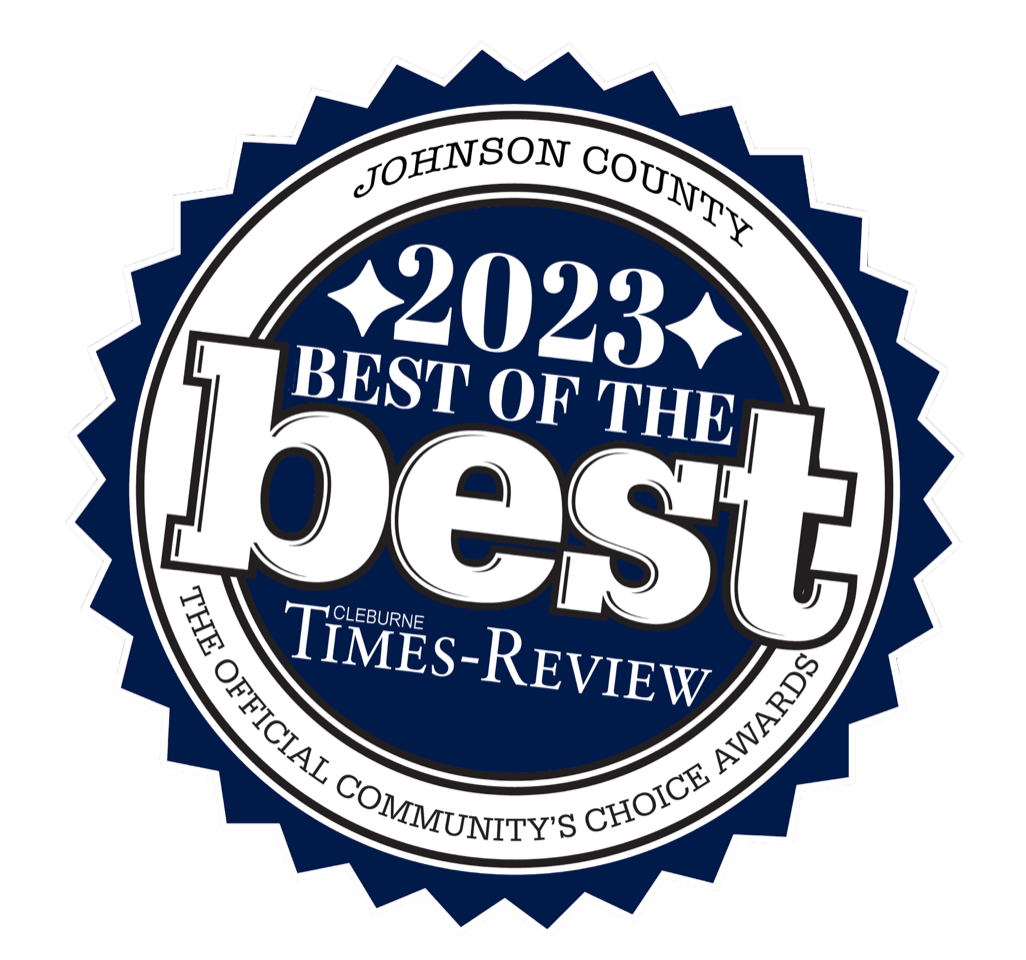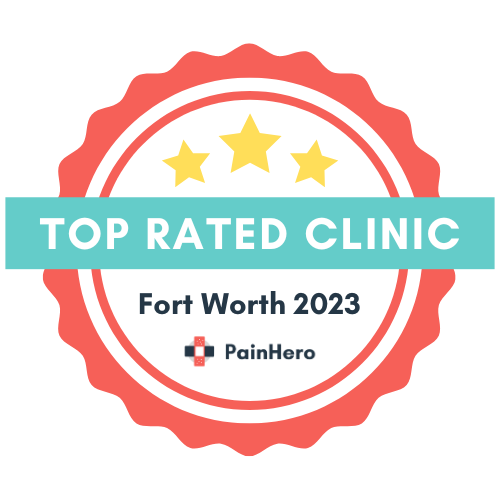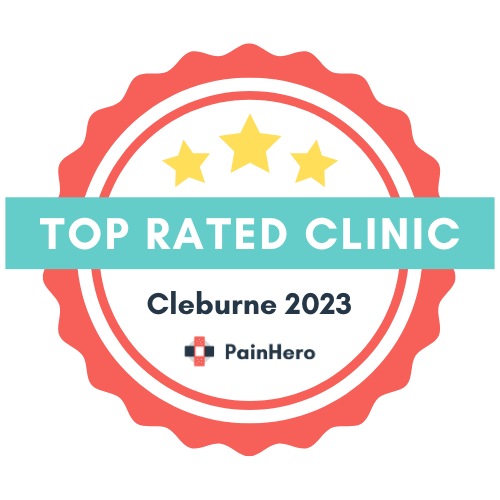ACE PHYSIO
Latest News & Article
October is National Physical Therapy Month, a time to recognize the vital role physical therapists play in improving our health. If you’ve ever considered physical therapy or have experienced its benefits, here are five reasons to celebrate this valuable intervention. Holistic Approach Physical therapy takes a holistic approach to health. Instead of just treating symptoms, physical therapists focus on the whole body. They assess how different systems interact and work together to improve your overall function and mobility. This leads to better outcomes, as it addresses the underlying issues rather than just masking pain. Safety One of the biggest advantages of physical therapy is its safety. Unlike surgeries and medications, which can come with side effects, risk of infection, and more, physical therapy is a non-invasive treatment option. It provides effective methods for managing pain and improving function without the risks associated with invasive procedures. This makes it a great choice for many individuals seeking relief from pain recovery from an injury. Cost-Effectiveness Physical therapy can be more cost-effective than other medical interventions, like surgeries or long-term medication use. Many people find that investing in physical therapy not only reduces the need for more expensive treatments down the line but also leads to quicker recovery times. By addressing issues early on, you can save money in the long run while improving their health. Improved Mobility and Function Physical therapists are all about getting you moving and back to the activities you love. Whether recovering from surgery, an injury, or managing a chronic condition, therapy helps you regain your ability to perform daily activities. By working closely with your physical therapist, you'll get a personalized plan that focuses on your goals. Long-Term Benefits The benefits of physical therapy extend beyond immediate relief. By identifying and addressing the root causes of pain and dysfunction, your physical therapist will help you achieve long lasting improvements in your health. Additionally, physical therapy emphasizes the importance of physical activity and exercise, which have incredible benefits for overall well-being. You'll learn how to stay active, reducing your risk for future injuries and promoting a healthier lifestyle! As we celebrate National Physical Therapy Month, it’s essential to recognize the many advantages of physical therapy. From its holistic approach and safety, to the cost-effectiveness, and long-term benefits physical therapy offers a comprehensive solution for anyone seeking to improve their health. If you’re considering physical therapy, call a physical therapist and find out how it can help you lead a more active, fulfilling life. References Research: 1) Effects and Benefits of Physical Therapy in the Mood, Quality of Life and Cognition Psychological and Cognitive Effects of Physical Therapy a) https://ijpot.com/scripts/IJPOT%20April-June_2020.pdf#page=267 2) Beth Black, MarySue Ingman, Jamie Janes, Physical Therapists' Role in Health Promotion as Perceived by the Patient: Descriptive Survey, Physical Therapy, Volume 96, Issue 10, 1 October 2016, Pages 1588–1596 a) https://doi.org/10.2522/ptj.20140383 3) Emily Knight, Robert J. Werstine, Diane M. Rasmussen-Pennington, Deborah Fitzsimmons, Robert J. Petrella, Physical Therapy 2.0: Leveraging Social Media to Engage Patients in Rehabilitation and Health Promotion, Physical Therapy, Volume 95, Issue 3, 1 March 2015, Pages 389–396 a) https://doi.org/10.2522/ptj.2 b) 0130432 4) Diana C. Parra, Elissa C. Held Bradford, B. Ruth Clark, Susan B. Racette, Susan S. Deusinger, Population and Community-Based Promotion of Physical Activity: A Priority for Physical Therapy, Physical Therapy, Volume 97, Issue 2, February 2017, Pages 159–160 a) https://doi.org/10.1093/ptj/pzw006 Articles and Content: 1) National Physical Therapy Month: a) https://www.apta.org/national-physical-therapy-month 2) ChoosePT Toolkit a) https://www.choosept.com/toolkit 3) PPS Annual Conference a) https://ppsapta.org/events/conferences/
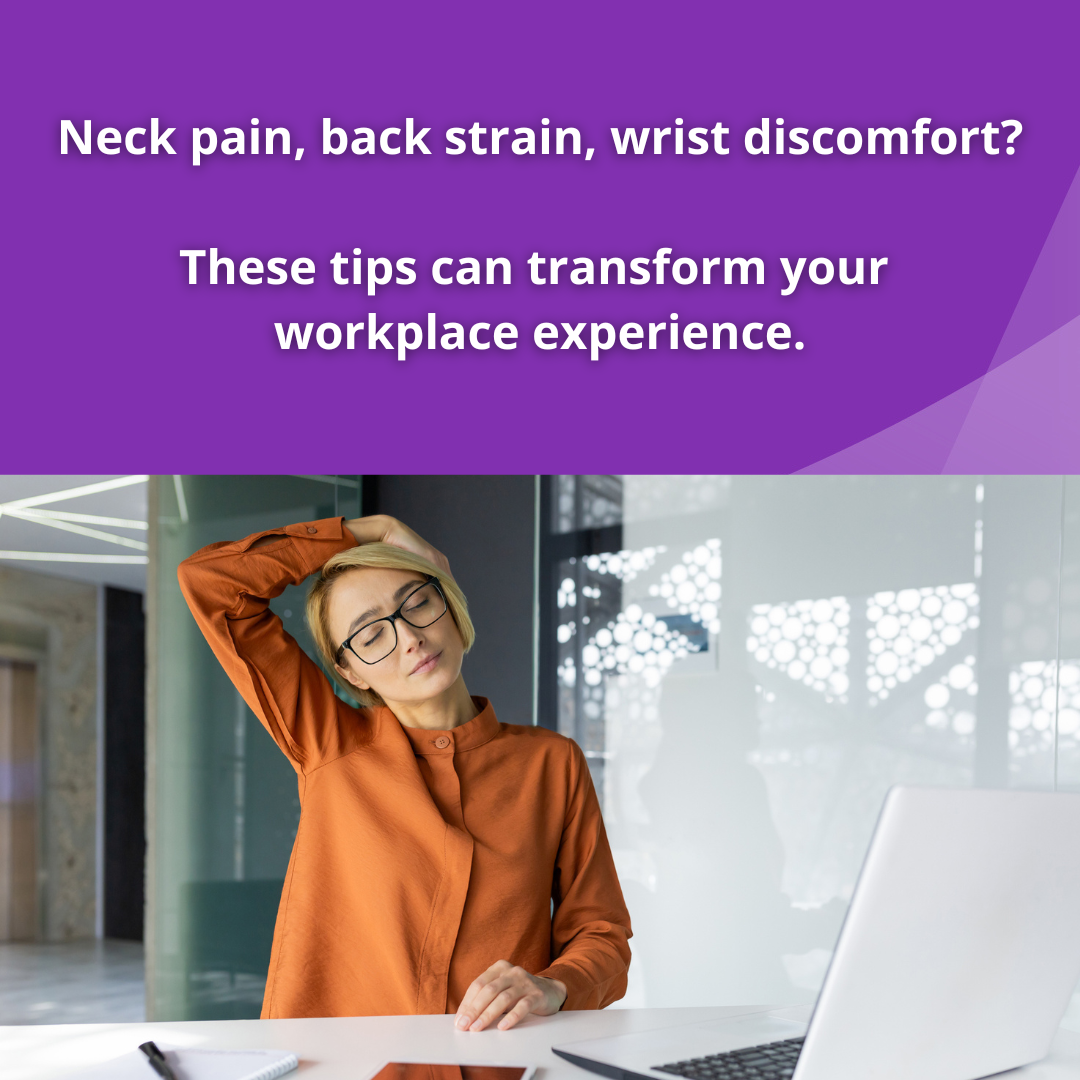
For active adults in Fort Worth, staying healthy often means balancing our active lives with the demands of work. Whether you're lifting in a warehouse, caring for patients, or spending hours at a desk, your job can put strain on your body. The good news? Physical therapists (PTs) are experts in ergonomics , the science of making your workspace fit you , not the other way around. Beyond the Clinic: Physical Therapists as Workplace Wellness Experts You might think of PTs as only helping after an injury, but many play a vital role in preventing them. They are key players in ergonomics, which focuses on designing work environments, tools, and tasks to reduce discomfort, strain, and injury. The ultimate goal? To boost your comfort and efficiency on the job. For hands-on roles like those in manufacturing, healthcare, or retail, our Fort Worth PTs assess tasks such as heavy lifting, prolonged standing, or repetitive motions. They then recommend practical adjustments to minimize strain and injury risks. This can include: Proper body mechanics training: Teaching you the safest ways to move and lift. Workstation modifications: Adjusting equipment or setups to better suit your body. Specialized tools: Suggesting aids that reduce physical stress. Additionally, PTs can design strengthening and flexibility programs specifically tailored to your job's demands, helping you stay pain-free and productive. The Desk Job Dilemma: Posture and Pain One of the most common sources of work-related pain for active adults today is sitting at a desk all day , whether it's at home or in the office. Poor posture, repetitive movements (like typing or using a mouse), and an improperly set-up workstation can lead to nagging aches, stiffness, and even long-term injuries. This can show up as: Stiff neck and shoulders Persistent lower back pain Wrist or forearm strain (think carpal tunnel syndrome) Tension headaches Simple Strategies for a More Comfortable Workday If your job involves significant desk time, here are practical tips you can start using today to prevent or reduce discomfort: Move Regularly: Prolonged sitting limits circulation to your joints and muscles, creates muscle imbalances, and can lead to strain. Incorporating frequent, short breaks is incredibly effective. Get up and move: Even a 30-second stand and stretch break every 30-60 minutes can make a big difference. Move in your chair: Roll your shoulders backward, gently turn your head side-to-side, or nod your head up and down. Stretch out your forearms and your legs. Optimize Your Workspace Setup: Configuring your office to fit your body and your tasks is vital for maintaining good posture and staying comfortable. Chair Position: Adjust your chair so your hips and knees are at a comfortable 90-degree angle. Arm Rests: Ensure your armrests allow you to sit close to your desk without hunching. Keyboard & Mouse: Position your keyboard so your hands are slightly below your elbows, keeping your wrists neutral. Monitor Placement: Your monitor should be directly in front of you, with the top of the screen at eye level. When to Consult a Fort Worth Physical Therapist If you're experiencing persistent work-related pain, or you simply want to proactively prevent future issues, our physical therapists at ACE Physio & Performance can help. We'll thoroughly assess your posture, analyze your workstation, and observe your movement patterns to create a personalized plan. Our goal is to help you overcome current pain and equip you with the knowledge to maintain a healthy, productive work life. Ready to Work (and Live!) Without Pain? Don't let workplace discomfort hold you back from your active lifestyle. Contact ACE Physio & Performance in Fort Worth today for an evaluation and take the first step toward working—and living—pain-free! References: Prall J, Ross M. The management of work-related musculoskeletal injuries in an occupational health setting: the role of the physical therapist. J Exerc Rehabil. 2019 Apr 26;15(2):193-199. Fabrizio, Philip. Ergonomic Intervention in the Treatment of a Patient With Upper Extremity and Neck Pain. Physical Therapy, Volume 89, Issue 4, 1 April 2009, Pages 351–360. Shariat, Ardalan, et al. Effects of stretching exercise training and ergonomic modifications on musculoskeletal discomforts of office workers: a randomized controlled trial. Brazilian Journal of Physical Therapy, Volume 22, Issue 2, 2018, Pages 144-153.
Fall is on the way, and so are school buses and students carrying…backpacks. You might not think much about those bags full of books, pencils, crayons, and computers, but physical therapists do. Why Backpacks Matter Students will always have things to carry between home and school. A backpack is a great way to do that, but if they're too heavy, they can cause problems. Research has shown that carrying a heavy backpack changes students' posture, walking speed, step length, and more. Unsurprisingly, we also know that as students walk greater distances and become more fatigued, these changes worsen. These changes can lead to neck pain, back pain, or other musculoskeletal issues. How Heavy Is Too Heavy? How much weight a student can safely carry is directly affected by their weight. Studies have shown that changes in posture and performance start to occur when the backpack weighs 10% of the student's body weight. Experts agree that students should not carry more than 15% of their body weight in a backpack. Unfortunately, most data show that more than half of students carry more than the recommended load. 5 Tips for Parents and Students To reduce backpack weight and help your student avoid pain, here are a few tips: 1. Plan ahead - Each night, go through the backpack and remove items not needed the next day. Likewise, ensure your student doesn’t bring things home they won't need that night. 2. Use your locker - Planning ahead can help remove extra weight between home and school. The locker can lighten the load during the school day. Students can avoid carrying extra loads during the school day by making a few stops at their lockers. 3. Pack right - Heavier items should be placed close to the student's back, and lighter items should be placed further away. 4. Wear it right - Using both shoulder straps and front or hip straps, if you have them, helps distribute the load evenly. The bottom of the pack should be even with the bottom of the low back. Packs worn too high or low exaggerate postural changes and can restrict movement. 5. Pick the right pack - If you're shopping for a new backpack, look for one with two straps rather than one. A chest strap and hip belt can help distribute the load. The pack should also be sized appropriately - no longer than the student's torso. You can't control what your student needs for school. However, you can use these tips to help reduce your student's load and ensure that they carry it correctly. If your student is having pain in their back, neck, or anywhere else, call their physical therapist today. They can help! References 1) The Influence of the Weight of the Backpack on the Biomechanics of the Child and Adolescent: A Systematic Review and Meta-analysis With a Meta-Regression a. https://www.ingentaconnect.com/content/wk/pep/2023/00000035/00000002/art00007 2) Backpack use in children. Pediatric Physical Therapy : the Official Publication of the Section on Pediatrics of the American Physical Therapy Association. 2002 ;14(3):122-131. a. https://doi.org/10.1097/00001577-200214030-00002 3) Effects of Educational session on school backpack use among elementary school students a. https://www.scielo.br/j/rbfis/a/Y8XW48pPRmSrZbYBrJKPtct/?lang=en&format=html# 4) Effect of Backpack Load Carriage on Cervical Posture in Primary Schoolchildren. 1 Jan. 2012 : 99 – 108. a. https://content.iospress.com/articles/work/wor01289 Articles/Content: 1) 3 Tips for Backpack Safety a. https://www.choosept.com/health-tips/3-tips-backpack-safety 2) Backpack Tips from a Pediatric Physical Therapist a. https://www.highbarhealth.com/blog/backpack-tips-from-a-pediatric-physical-therapist 3) Is your child's backpack making the grade? a. http://www.alternatives4children.org/news/pdfs/PT%20RESOURCES%202020/Children %20and%20Backpacks.pdf
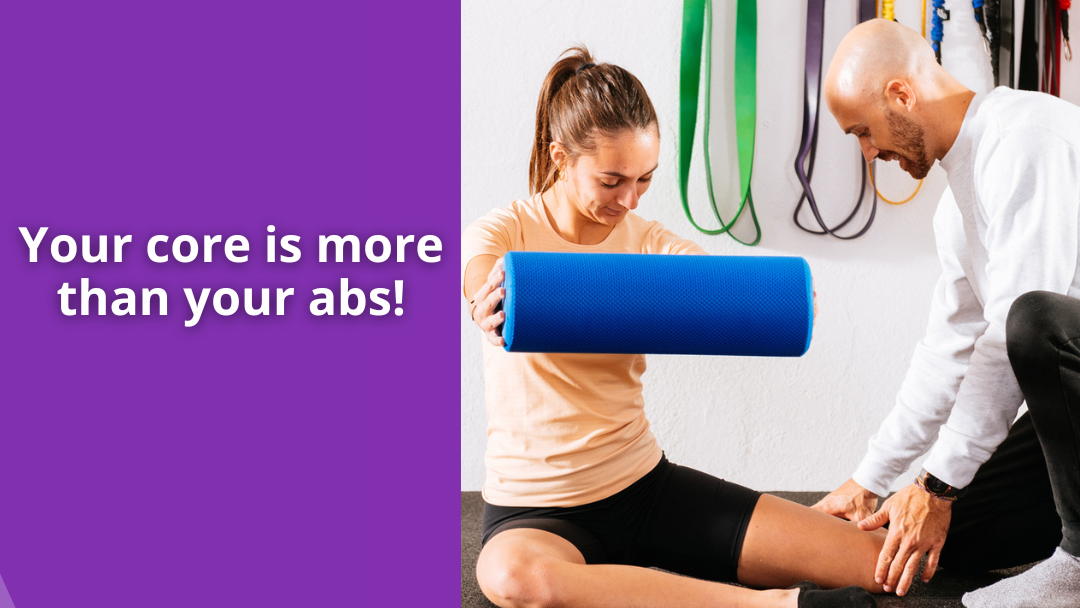
Summer in Fort Worth means outdoor adventures, road trips, and making the most of our vibrant city. But as you gear up for travel, backyard projects, or simply enjoying the sunshine, remember to give your back the support it deserves. Here at ACE Physio & Performance, your trusted Fort Worth physical therapy clinic, we know a strong core is your ultimate defense against summer back pain. Long car rides to Possum Kingdom Lake, lifting heavy coolers for a Trinity Trails picnic, or even just rearranging patio furniture can all put unexpected stress on your spine. The good news? Proactive core strengthening can help you enjoy a pain-free summer. Why Your Core is Your Natural Back Brace Many active adults think of "core" as just abs, but it's much more comprehensive! Your core muscles act like a built-in corset, wrapping around your midsection to stabilize and support your spine. When these crucial muscles are weak, your back muscles compensate, leading to strain and, eventually, pain. Your true core encompasses four vital muscle groups: Deep Abdominal Muscles: The transverse abdominis, your deepest abdominal muscle, acts like a natural weightlifting belt. Back Muscles along Your Spine: Muscles like the multifidus provide segmental stability to your vertebrae. Pelvic Floor Muscles: These muscles form the base of your core and contribute to overall stability. Diaphragm: Your primary breathing muscle, which also plays a key role in core stability. Simple Core Exercises You Can Do Anywhere in Fort Worth You don't need a gym to build a strong core. These exercises can be done at home, at a park, or even in your hotel room while traveling! The Dead Bug: How to do it: Lie on your back with knees bent at 90 degrees, shins parallel to the floor, and arms extended towards the ceiling. Slowly lower one arm overhead while simultaneously extending the opposite leg towards the floor. Keep your spine in neutral. Return to the start. Why it works: This exercise teaches your core to maintain stability while your limbs are in motion, crucial for dynamic activities. Reps: 10 repetitions per side. 2. Modified Plank: How to do it: Start on your knees and forearms. Ensure your body forms a straight line from your head to your knees. Keep your core engaged and avoid letting your hips sag or rise too high. Why it works: An excellent foundational exercise that builds strength in all major core muscle groups simultaneously. Hold: 15-30 seconds, gradually increasing duration as you get stronger. 3. Bird Dog: How to do it: Begin on your hands and knees, with hands directly under your shoulders and knees under your hips. Slowly extend one arm straight forward while simultaneously extending the opposite leg straight back, keeping your back flat and hips level. Hold briefly, then return to the start. Why it works: Enhances balance, coordination, and teaches your back and core muscles to work together. Reps: 8 repetitions per side, holding for 5 seconds. Smart Lifting for Pain-Free Summer Activities Whether you're loading luggage into the car for a trip out of Fort Worth or moving that new barbecue grill, proper lifting technique is paramount to protecting your back. Your Safe Lifting Checklist: Get Close: Position yourself as close to the object as possible. Bend Your Knees, Not Your Back: Hinge at your hips and bend your knees to squat down. Keep it Close: Hold the object as close to your body as you can. Lift with Your Legs: Engage your powerful leg muscles to stand up, keeping your back straight. No Twisting: Don't twist your torso while holding something heavy. If you need to turn, pivot your feet. Beat Travel Back Pain Long drives can be surprisingly tough on your back. Here's how to make your summer road trips more comfortable: Before You Drive: Adjust your car seat so your knees are slightly higher than your hips. Place a small rolled towel or lumbar pillow behind the curve of your lower back. Ensure you can comfortably reach the pedals without overstretching. During the Trip: Frequent Stops: Plan to stop every hour to get out, walk around, and stretch. Simple Stretches: Perform light stretches at rest stops, such as gentle trunk rotations or standing back extensions. Stay Hydrated: Dehydration can make muscles feel tighter and more prone to spasms. Quick Stretches for Your Busy Fort Worth Days Incorporate these easy stretches to keep your back feeling loose and happy: Cat-Cow Stretch: On hands and knees, arch your back like a cat, then gently let it sag down like a cow. Perform 10 slow, controlled movements. Knee-to-Chest Stretch: Lie on your back. Gently pull one knee towards your chest, holding for 20 seconds. Repeat on the other leg. Child's Pose: Start on your hands and knees. Sit back on your heels, extend your arms forward, and rest your forehead on the floor. Hold for 30 seconds. When to See a Fort Worth Physical Therapist While many instances of back pain resolve with simple exercises and good habits, there are times when professional help from a Fort Worth physical therapy expert is vital. Contact ACE Physio & Performance if you experience: Pain that lasts more than a few days Pain that shoots down your leg (sciatica) Numbness or tingling in your leg or foot Pain that results from a fall or significant injury Back pain that significantly limits your daily activities Your Summer Back Health Action Plan from ACE Physio & Performance Start Small, Stay Consistent: Aim for 5-10 minutes of core exercises three times a week. Consistency is key! Practice Smart Lifting: Always use your legs, not your back, for lifting. Move Often: Avoid prolonged sitting or standing in one position. Take short breaks to move and stretch. Listen to Your Body: Pay attention to pain signals and rest when needed. Don't push through sharp pain. Remember, preventing back pain is far easier than treating it. A few minutes invested in core strength and smart habits now can save you weeks of discomfort later, allowing you to fully embrace all that summer in Fort Worth has to offer! Want to learn more about protecting your back or need help with existing pain? Contact ACE Physio & Performance in Fort Worth today to schedule a consultation with our expert physical therapists! References American Physical Therapy Association. (2023). "Core Stability and Back Pain Prevention." APTA Guidelines. McGill, S. (2016). "Low Back Disorders: Evidence-Based Prevention and Rehabilitation." Human Kinetics. National Institute of Occupational Safety and Health. (2023). "Ergonomics and Musculoskeletal Disorders." CDC Publication. Hides, J., et al. (2022). "Core Muscle Training for Low Back Pain." Journal of Physical Therapy Science, 34(8), 542-548. Harvard Health Publishing. (2023). "Core Exercises: Why You Should Strengthen Your Core Muscles." Harvard Medical School. Mayo Clinic. (2023). "Back Pain Prevention: Lifestyle Strategies." Mayo Foundation for Medical Education and Research.
Stay Active and Injury-Free This Summer! Tips for Your Favorite Activities Summer is a great time to get outside and enjoy activities like running, hiking, and swimming. Moving your body is great for your health! But sometimes, fun activities can lead to aches and pains. The good news is that many common summer sports injuries can be avoided. As physical therapists, we want to help you stay active and safe. Studies show that programs to prevent injuries really can work. Taking a few simple steps before, during, and after your activities can make a big difference. Before You Go: Warm Up Your Body Think of a warm-up as a gentle wake-up call for your muscles. It gets your blood flowing and prepares your body for more activity. This can help lower your chances of getting hurt. For Running & Hiking: Start with 5-10 minutes of light cardio, like brisk walking or jogging in place. Try some dynamic stretches - these are stretches where you move: Leg Swings : Hold onto something stable and gently swing one leg forward and back (10 times), then side to side (10 times). Repeat with the other leg. Arm Circles: Make big circles with your arms forward (10 times) and then backward (10 times). Walking Lunges: Step forward into a lunge, keeping your front knee over your ankle. Alternate legs for 10-12 lunges. For Swimming: Begin with a few minutes of easy swimming at a slow pace. Do some gentle arm and leg movements in the water or on the pool deck: Arm Swings: Similar to above, swing your arms forward and backward. Shoulder Rolls: Roll your shoulders up, back, and down (10 times). Smart Moves to Avoid Common Injuries Each activity has its own set of common issues. Here’s how to protect yourself: Running: Common Issues: Runner's knee, shin splints, and ankle sprains. Stay Safe: Wear good running shoes that fit well and replace them when they wear out. Increase your running distance and speed slowly. Don't do too much, too soon. Run on softer surfaces when possible. Hiking: Common Issues: Ankle sprains, blisters, and knee pain. Stay Safe: Wear sturdy hiking shoes or boots with good ankle support. Use hiking poles, especially on uneven ground, to help with balance. Pay attention to the trail and where you are stepping. Drink plenty of water, especially on hot days. Swimming: Common Issues: Swimmer's shoulder and neck pain. Stay Safe: Focus on good swimming form. If you’re unsure, a lesson could help. Don’t overdo it with training equipment like hand paddles too soon. Listen to your body. If your shoulder or neck hurts, take a break. After Your Activity: Cool Down and Recover Just like a warm-up, a cool-down helps your body. It allows your heart rate to return to normal slowly and can help reduce muscle soreness. Cool Down (All Activities): Finish with 5-10 minutes of slower activity. For example, walk after a run or hike, or do some very easy swimming. Recovery Tips: Gentle Stretching: Hold stretches for 20-30 seconds. Focus on the muscles you used. For example, stretch your hamstrings (back of thighs), quadriceps (front of thighs), and calves after running or hiking. For swimming, stretch your shoulders and chest. Hydrate: Drink water to replace fluids you lost while sweating. Eat Well: Have a balanced snack or meal with some protein and carbohydrates to help your muscles recover. Rest: Make sure you get enough sleep. This is when your body does a lot of its repair work. Listen to Your Body: If something feels wrong or you have pain that doesn't go away, don't ignore it. Enjoy your summer activities! Take these simple steps to help keep yourself injury-free and feeling your best. If you do experience pain or an injury, remember that physical therapy can help you get back to doing what you love. Contact us to learn more. References: Research: https://pmc.ncbi.nlm.nih.gov/articles/PMC7353668/ https://meridian.allenpress.com/jcep/article/10/3/106/470461/Effects-of-Stretching-on-Injury-Risk-Reduction-and https://www.sciencedirect.com/science/article/pii/S2095254620301526 Articles and Content: https://www.choosept.com/health-tips/sports-injuries-emotions-how-physical-therapists-can-help-with-both-plus-tips-athletes https://www.choosept.com/why-physical-therapy/specialty-areas-physical-therapy/sports-physical-therapy https://www.choosept.com/health-tips/5-tips-improve-your-swimming-stroke-avoid-injury https://www.choosept.com/health-tips/healthy-running-advice-physical-therapists https://www.asics.com/nz/en-nz/blog/article/how-to-warm-up-before-running?srsltid=AfmBOor2krvZPVIXshxbpaWYA-pRHncP4NUfKooGF4wy_8LYmW9cXB3x https://www.healthline.com/health/muscle-recovery
Dry Needling: Targeted Pain Relief for Active Adults Active adults understand the importance of maintaining musculoskeletal health. Whether it's recovering from a weekend hike or managing chronic pain, finding effective treatments is crucial. Dry needling is a technique increasingly used by physical therapists to address various pain conditions. What is Dry Needling? Dry needling involves inserting thin, monofilament needles into muscles, ligaments, tendons, fascia, and other soft tissues to target myofascial trigger points (MTrPs). These trigger points are tight, knotted areas in muscles that can cause pain, restrict movement, and lead to various discomforts. Unlike injections, dry needling doesn't introduce any medication. It works by stimulating specific reactions within the targeted tissue. How Does Dry Needling Work? The goal is to elicit a local twitch response, an involuntary muscle contraction, which helps release tension and reduce pain. Palpation: The therapist carefully locates trigger points by feeling for taut muscle bands. Needle Insertion: A sterile needle is inserted into the trigger point. Stimulation: The needle may be moved or manipulated to evoke a twitch response. Electrical Dry Needling: Some therapists use electrical stimulation through the needles to enhance the therapeutic effect. Conditions Treated with Dry Needling: Dry needling is used for a variety of neuromusculoskeletal conditions, including: Myofascial pain syndrome Muscle tension and pain Scar tissue pain Neck and shoulder pain Low back pain Knee pain Temporomandibular joint (TMJ) pain Plantar heel pain Pain after total knee arthroplasty Chronic regional pain syndrome Greater trochanter pain syndrome Benefits for Active Adults: Pain reduction Improved muscle function and range of motion Decreased muscle tension Faster return to activity What to Expect During a Session: The therapist will palpate to identify trigger points. The skin is cleansed. Needles are inserted and manipulated. You may experience muscle twitching or soreness. Risks and Precautions: Dry needling is generally safe when performed by a trained professional. However, potential risks include: Bruising and bleeding Soreness after treatment Infection (rare) Nerve damage (rare) Pneumothorax (rare, in chest region) Contraindications: Dry needling is not recommended for individuals with: Needle phobia Bleeding disorders or anticoagulant use Active infections Pregnancy (relative) The Importance of Qualified Practitioners: Dry needling should only be performed by trained medical professionals who have received specialized training. Proper training ensures safe and effective treatment. Research Findings: Studies indicate dry needling is effective for reducing pain and improving function in various musculoskeletal conditions. It is often combined with other physical therapy techniques for optimal results. Evidence supports its use in treating low back pain, neck pain, and TMJ pain. There are mixed results when dry needling is compared to traditional physical therapy treatments. Key Takeaways: Dry needling targets trigger points to relieve pain and improve muscle function. It is a safe and effective treatment when performed by a trained medical professional. It is used for a variety of musculoskeletal conditions. It is often combined with other physical therapy techniques. References: Inmaculada Carmen Lara-Palomo, Esther Gil-Martínez, Eduardo Antequera-Soler, Adelaida María Castro-Sánchez, Manuel Fernández-Sánchez, Héctor García-López. Electrical dry needling versus conventional physiotherapy in the treatment of active and latent myofascial trigger points in patients with nonspecific chronic low back pain. Trials. 2022;23(1):1-11. doi:10.1186/s13063-022-06179-y Palmer EBsMs, Snook APMMe. Dry Needling. Richman S DhsMP, ed. CINAHL Rehabilitation Guide. September 2021. Accessed March 7, 2023. https://search.ebscohost.com/login.aspx?direct=true&db=rrc&AN=T709230&site=eds-live Disclaimer: This blog post is for informational purposes only and does not constitute medical advice. Always consult with a qualified healthcare professional before starting any new treatment.
Sleep is essential for our health and well-being. It helps our bodies recover, boosts our mood, and improves our ability to think clearly. Unfortunately, many people struggle with getting enough good-quality sleep. 62% of all Americans experience a sleep problem several nights a week—and it's likely those numbers are low, sleep problems often go under-reported. Physical therapists often see how physical health can impact sleep. Here’s how your PT can help you sleep better, along with some tips for improving your sleep habits. Why Sleep Matters Good sleep is crucial for several reasons: 1. Physical Health: Sleep helps your body heal and repair itself. It supports your immune system, making you less likely to get sick. 2. Mental Clarity: Lack of sleep can lead to trouble concentrating and making decisions. A good night’s sleep helps your brain function at its best. 3. Emotional Well-Being: Sleep affects your mood. Poor sleep can lead to irritability and increased stress, while good sleep promotes a positive outlook. How Physical Therapists Can Help Physical therapists can play a key role in improving your sleep through various strategies: 1. Assessing Physical Pain Many people have trouble sleeping because of pain or discomfort. A PT can help identify the source of your pain, whether it’s from an injury, chronic condition, or poor posture. By developing a plan to address these issues, we can help reduce pain, making it easier for you to sleep. This one also works both ways - not sleeping enough has been shown to make you more sensitive to pain. 2. Promoting Relaxation Techniques Physical therapists can teach you relaxation techniques, like deep breathing, gentle stretching, or progressive muscle relaxation. These methods can help calm your mind and body, making it easier to fall asleep. 3. Creating a Personalized Exercise Plan Regular physical activity can improve sleep quality. A PT can create a tailored exercise program that suits your needs and lifestyle. Gentle exercises, especially those done in the evening, can help you unwind and prepare for sleep. 4. Improving Sleep Environment Your PT can also offer advice on creating a better sleep environment. This includes tips on your mattress, pillows, and bedroom setup to ensure you have a comfortable place to sleep. Tips for Better Sleep In addition to working with your PT, here are a few steps you can take to improve your sleep: ● Stick to a Schedule: Go to bed and wake up at the same time every day, even on weekends. ● Limit Screen Time: Reduce exposure to screens at least an hour before bed. The blue light from screens can interfere with your ability to fall asleep. ● Create a Bedtime Routine: Establish a calming routine before bed, such as reading or taking a warm bath. ● Watch Your Diet: Avoid large meals, caffeine, and alcohol close to bedtime. These can disrupt your sleep. ● Keep Your Bedroom Dark and Cool: A dark, cool room can help signal to your body that it’s time to sleep. Sleep is vital for our overall health, and physical therapists can help you achieve better sleep through pain management, relaxation techniques, and personalized exercise plans. By combining our expertise with your commitment to good sleep habits, you can enjoy the restful nights you deserve. Remember, a good day starts with a good night’s sleep! References Research: 1) Catherine F. Siengsukon, Mayis Al-dughmi, Suzanne Stevens, Sleep Health Promotion: Practical Information for Physical Therapists, Physical Therapy, Volume 97, Issue 8, August 2017, Pages 826–836 a) https://doi.org/10.1093/ptj/pzx057 2) Jo Nijs, Olivier Mairesse, Daniel Neu, Laurence Leysen, Lieven Danneels, Barbara Cagnie, Mira Meeus, Maarten Moens, Kelly Ickmans, Dorien Goubert, Sleep Disturbances in Chronic Pain: Neurobiology, Assessment, and Treatment in Physical Therapist Practice, Physical Therapy, Volume 98, Issue 5, May 2018, Pages 325–335 a) https://doi.org/10.1093/ptj/pzy020 3) A Survey of Physical Therapists' Perception and Attitude About Sleep a) https://www.ingentaconnect.com/content/asahp/jah/2015/00000044/00000001/art00 008 4) Catherine F Siengsukon, Lara A Boyd, Does Sleep Promote Motor Learning? Implications for Physical Rehabilitation, Physical Therapy, Volume 89, Issue 4, 1 April 2009, Pages 370–383 a) https://doi.org/10.2522/ptj.20080310 Articles/Content: 1) PT’s Role in Sleep Education a) https://www.apta.org/news/2017/08/08/from-ptj-pts-should-wake-up-to-their-role-inpromoting-sleep-health 2) Can PT Help You Sleep Better a) https://www.ptprogress.com/sleep-physical-therapy/
Falls are a big deal. They can cause injuries and make it hard to live on your own. They can also make you afraid of falling again. This fear might make you less active, making you weaker and more likely to fall. It's a tough cycle to break. Falls aren't a normal part of aging. Physical therapy can reduce your risk and help you stay independent. Here are five ways your PT can help. Creating a personalized exercise plan Being active helps prevent falls. Your PT will create an exercise plan based on your needs and interests. This should be fun! Consider going on walks, dancing, aquatic exercise, or practicing yoga. Making Your Home Safer Many falls happen at home. Simple changes like removing tripping hazards and using night lights can make a significant difference. Your physical therapist can help you with these and recommend other modifications to make your home safer. Strength and Balance Exercises Strong muscles and good balance are vital to preventing falls. Your PT will show you specific exercises that help with both. Addressing underlying health issues Falls are often the result of multiple factors. Your PT can work with your other doctors to address things like vision problems, heart issues, incontinence, or diabetes that might make you more likely to fall. Help you find community programs Staying active is easier and more fun with others. Your PT can help you find group exercise classes or other programs in your area that will help you stay strong and independent. Take the first step. If you're worried about falling or have already had a fall, don't wait to get help. Talk to your physical therapist. Falling isn't a normal part of getting older. With the right help, you can stay strong, maintain your balance, and keep doing the things you love. Physical therapy is a great way to ensure that you stay on your feet and remain active and independent. Take that first step towards better balance and a more active life. Your future self will thank you! References 1. Exercise for falls and fracture prevention in long term care facilities: a systematic review and meta-analysis. J Am Med Dir Assoc. 2013;14(9):685-689.e2. a. https://pubmed.ncbi.nlm.nih.gov/23860265/ 2. Preventing Falls in Older Persons. Am Fam Physician. 2017 Aug 15;96(4):240-247. PMID: 28925664. a. https://pubmed.ncbi.nlm.nih.gov/28925664/ 3. The Effectiveness of Physical Therapist–Administered Group-Based Exercise on Fall Prevention: A Systematic Review of Randomized Controlled Trials. Journal of Geriatric Physical Therapy 36(4):p 182-193, October/December 2013. a. https://journals.lww.com/jgpt/fulltext/2013/10000/the_effectiveness_of_physical.5.asp x?casa_token=r5fLfvxztA0AAAAA:9yaeibFmZiCeIZiQcSOVcbWkWpA_8spTG-bNT2UFaD2Dc7tljHsv3VW5XfmnvIySLNwrJDd7aqnJTsfdHmRqK8 4. Exergame technology and interactive interventions for elderly fall prevention: A systematic literature review a. https://www.sciencedirect.com/science/article/abs/pii/S0003687016302265 5. Reducing the Risk of Falling and Injuries From Falls: Research on the Value of Physical Therapy a. apta-handout-falls-research.pdf 6. Physical Therapy Guide to Falls a. https://www.choosept.com/guide/physical-therapy-guide-falls 7. Fall Prevention Starts with a Conversation a. https://www.ncoa.org/article/falls-prevention-conversation-guide-for-caregivers 8. Balance and Falls a. https://www.apta.org/patient-care/public-health-population-care/balance-and-falls
80% of Americans Fall Short on Exercise: Physical Therapists Offer Solutions Despite overwhelming evidence of its health benefits, a staggering 80% of Americans fail to meet recommended physical activity levels, according to the Department of Health. This lack of movement is linked to a rise in chronic diseases, impacting millions nationwide. Exercise is a powerful tool for preventing and managing a wide range of health problems, from heart disease and diabetes to depression and sleep disorders. The current physical activity guidelines recommend: ● Preschoolers (3-5): At least 3 hours of daily physical activity. ● Children & Adolescents (6-17): At least 60 minutes of daily activity. ● Adults: 150 minutes of moderate-intensity aerobic activity weekly, plus muscle strengthening activities on two or more days. ● Older Adults (65+): Same as adults, with additional balance training exercises. Physical Therapists: Your Partners in Movement Physical therapists are highly qualified healthcare professionals with extensive training in anatomy, physiology, and movement science. They can be invaluable partners in helping people achieve their fitness goals, especially those who: ● Are you recovering from an injury or surgery? ● Experience pain or limitations affecting movement. ● Have a chronic condition impacting fitness, like arthritis. ● Need help improving balance or preventing falls. ● Desire a personalized program addressing specific weaknesses or imbalances. PTs can work with your doctor to create a safe and effective exercise plan. They can also help prevent injuries, improve form, and motivate you toward better health. To prioritize your health and take a step towards being more active, call your physical therapist to create a personalized exercise plan that fits your needs and current fitness level. References 1) Building motivation and sustainability into the prescription and recommendations for physical activity and exercise therapy: The evidence, Physiotherapy Theory and Practice, 25:5-6, 424-441, a. DOI: 10.1080/09593980902835344 2) The physical therapist’s role in physical activity promotion. British Journal of Sports Medicine 2009;43:99-101. a. https://bjsm.bmj.com/content/43/2/99.citation-tools 3) Improving Adherence to Exercise: Do People With Knee Osteoarthritis and Physical Therapists Agree on the Behavioral Approaches Likely to Succeed?. a. Arthritis Care Res, 70: 388-397. https://doi.org/10.1002/acr.23297 4) Periodization and physical therapy: Bridging the gap between training and rehabilitation a. https://www.sciencedirect.com/science/article/abs/pii/S1466853X1500067X Articles/Content: 1) Physical Activity Improves Your Health and Quality of Life a. https://www.choosept.com/video/physical-activity-improves-health-quality-life 2) Home Exercise From a Physical Therapist a. https://www.choosept.com/video/home-exercises-floor-mat 3) Tips to Avoid Overtraining a. https://www.choosept.com/health-tips/tips-avoid-overtraining-injuries
For gym-goers battling chronic pain, navigating the world of physical therapy treatments can be confusing. Two modalities often mentioned are ultrasound therapy and focused extracorporeal shockwave therapy (ESWT). While both utilize soundwaves, they differ significantly in their approach and effectiveness. This blog post aims to demystify these treatments, empowering you to make informed decisions regarding your pain management. Ultrasound Therapy: Gentle Healer Imagine high-frequency sound waves gently penetrating your tissues, promoting healing and pain relief. That's the essence of ultrasound therapy. It works by increasing blood flow, relaxing muscles, and enhancing cellular processes. This non-invasive method is suitable for various conditions, including: Tendinitis Bursitis Osteoarthritis Muscle strains Treatment sessions are typically short (5-10 minutes) and involve applying gel to the targeted area while the therapist glides the ultrasound head in circular motions. Depending on your condition, multiple sessions might be required. Focused ESWT: Targeting Pain at Its Source Think of focused ESWT as a more aggressive cousin of ultrasound. It uses high-energy sound waves precisely directed at the affected area. These "shockwaves" stimulate the body's natural healing response by: Increasing blood flow Breaking down calcium deposits Releasing growth factors Reducing pain-causing substances The result? Potentially accelerated healing and significant pain reduction. Treatment sessions are also shorter (3-8 minutes) but require multiple spaced-out sessions depending on the severity of your condition. Key Differences for Informed Choices Here's a breakdown of the key differences to help you understand which option might be better suited for you: Feature Ultrasound Therapy Focused ESWT (Shockwave Therapy) Mechanism High-frequency sound waves High-energy, focused sound waves Application Gentle heating and stimulation Creates microtrauma for healing Benefits Increased blood flow, pain relief, improved mobility Faster healing, reduced pain, tissue regeneration Limitations Less effective for chronic pain May cause temporary discomfort Session Duration 5-10 minutes 3-8 minutes Treatment Frequency Multiple sessions may be needed Multiple spaced-out sessions needed Effectiveness Effective for acute and some chronic pain Highly effective for chronic pain (up to 95% improvement) Both ultrasound therapy and ESWT offer non-invasive options for managing chronic pain. While ultrasound offers gentle relief, ESWT provides a more targeted approach for faster, longer-lasting results. Ultimately, consulting a healthcare professional is crucial to determine the most appropriate therapy for your specific needs. Disclaimer: This blog post provides general information only. It's not a substitute for professional medical advice. Always consult with a qualified healthcare professional for personalized treatment plans. REFERENCES A Deeper Look into StemWave® by Dr. Allen Manison, DC, DACBSP, CSCS, CCEP. (n.d.). StemWave. https://www.stemwave.com/a-deeper-look-into-stemwave/ Overcoming Chronic Pain with StemWave. (n.d.). MVMT Health. https://www.mvmt.health/overcoming-chronic-pain-with-stemwave/ StemWave Therapy for Knee Osteoarthritis. (n.d.). MVMT Health. https://www.mvmt.health/stemwave-therapy-for-knee-osteoarthritis/



